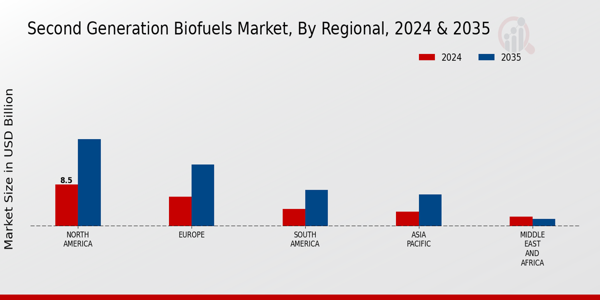Second Generation Bio fuels Market Summary
As per Market Research Future Analysis, the Second Generation Biofuels Market is poised for significant growth, driven by increasing demand for sustainable energy solutions. The market was valued at 20.56 USD Billion in 2023 and is projected to reach 45.3 USD Billion by 2035, with a CAGR of 6.81% from 2025 to 2035. Key drivers include government support for renewable energy, technological advancements in biofuel production, and a growing focus on reducing greenhouse gas emissions.
Key Market Trends & Highlights
The Second Generation Biofuels Market is influenced by several key trends.
- Market Size in 2024: USD 21.95 Billion; expected to grow to USD 45.3 Billion by 2035.
- Lignocellulosic Biomass segment projected to reach USD 16.5 Billion by 2035.
- North America to lead with a market value of USD 17.8 Billion by 2035.
- Regulatory support has led to a 10% increase in biofuel production over the past three years.
Market Size & Forecast
| 2023 Market Size | USD 20.56 Billion |
| 2024 Market Size | USD 21.95 Billion |
| 2035 Market Size | USD 45.3 Billion |
| CAGR (2025-2035) | 6.81% |
Major Players
Key players include BP, LanzaTech, ADM, Cosan, Poet LLC, Dupont, Shell, Valero Energy, Green Plains Renewable Energy, Novozymes, TotalEnergies, and Abengoa Bioenergy.



















Leave a Comment